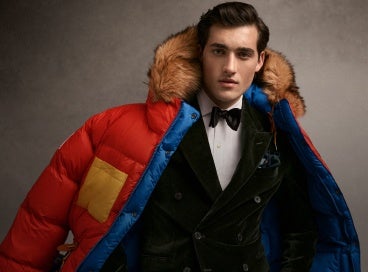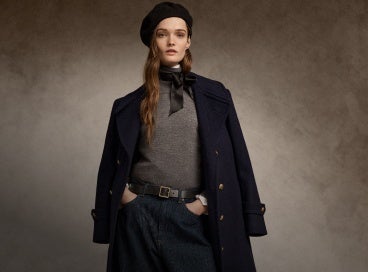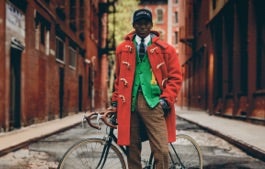
The Charismatic Cloth
Godfather I or Godfather II? John or Paul? Brown liquor or clear? Sampras or Federer? Mustard or mayonnaise? You either are or aren’t a corduroy person, and, of course, you should beThere are some things you don’t need the cool messenger of fashion to drop into your mind to make you like it. For me, this was corduroy. I have worn it now for so long, and through all seasons, that I can’t even remember the first time I saw it - though it was certainly long before the age of 16, when I laid eyes on a pair of dark blue wide-wale cord sofas in a neighbor’s house that I immediately decided I would copy the day I owned a house of my own.
Corduroy, as that particular encounter taught me, is a fabric of remarkable versatility. Whether, as the story goes, it was born on high in the royal courts of France (it is, after all, a ridged velvet) or down low among rural peasants in England (it is, depending on the weave of the pile, extremely durable), the fabric is one that can rise to the level of a smoking jacket, confer an Ivy League IQ to a blazer, bring suave bookishness to a suit, bestow enviable nonchalance to a weekend pair of pants, and add nothing less than style at the level of chic to mere furniture. It is - whether wide-wale or needlecord or pincord, as stiff as denim or as soft as cashmere - one charismatic cloth.
Unlike any of its cousins (say, wool or linen), corduroy is one of those things that requires full commitment; you can’t just dabble in it. Think of the choice of whether you are or are not into corduroy as an exclusively binary thing, like Godfather I or Godfather II, John or Paul, brown liquor or clear, Sampras or Federer, Patek or Rolex, mustard or mayonnaise. You either are or aren’t a corduroy person, for one piece is never enough.


Let’s keep it positive, and look at who has been and is such a type: Robert Redford in a tan cord suit in All the President’s Men; Donald Sutherland in a brown cord suit in Animal House; Gianni Agnelli in olive cord trousers at his estate, Villar Perosa; Wes Anderson in various outré shades of cord on and off the set; and, the newest member of this distinguished pack, Daniel Craig as James Bond, who, in No Time to Die, endures the blast of a roadside bomb, a brutal motorcycle chase, and the wholesale destruction of both his DB5 and romantic relationship with Madeleine Swann in a three-button cord suit in a light shade that he puts on thinking he’s just going to breakfast. By the time this action sequence in that suit is done in the movie, the pure personality of corduroy - its warmth and texture, strength and composure, the graceful way it hangs with sangfroid under the pressure of automatic gunfire - comes very close to completely stealing the scene. If nothing else, to me, that suit proves itself to be the match of any other unusual weave the spy has ever worn, including the baby-blue cotton terry onesie Sean Connery sported in Goldfinger.
This is because, as its embellished history suggests, corduroy is eternal. What other look with such richly iconic associations could once again deliver yet another new twist on who exactly the corduroy kind of man is? Cinematically, at least, many might have thought of corduroy before as nothing more than the dark brown uniform for a decidedly unmacho character like Alvy Singer in Annie Hall - the sartorial equivalent of a man for fun in horn-rimmed glasses. But cook that shade to khaki in the Mediterranean sun, slip it on a man with a license to kill, and a fabric proves it can also play against type. That is perhaps the greatest of corduroy’s traits: it gives you the strength of true individuality, no matter what you actually do for a living.
MORE FROM THE POLO GAZETTE
BOSS TWEED
Exploding the size of iconic tweed patterns to turn three-piece suits, Polo coats, and blazers into statement pieces worth notice
By Griffin Gonzales








